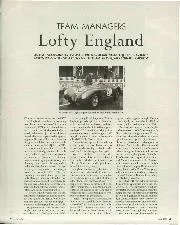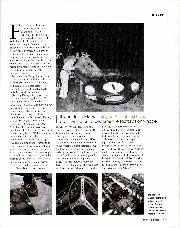This went much better – I had a great time flinging the car around in the rain – and [team manager] ‘Lofty’ England wrote to confirm my place in the team for Le Mans.
“Before that, though, Ecurie Ecosse bought two D-types and entered them for the Eifelrennen in May. I had not quite reached Adenau Bridge on my first lap when the brakes failed and I went backwards — and upside down! — through a hedge. Desmond [Titterington, his team-mate] also crashed for the same reason [probably pad knock-off caused by hub flex]. I was very shaken and knocked about, and Stirling stopped in a Mercedes, helped me out and gave me a lift back to the pits.
“I immediately decided to retire from racing and phoned ‘Lofty’, who tried to persuade me otherwise. I do regret stopping now (I was only 23), but if! had carried on I might not be here today.
“I loved the D-type: it understeered a bit in the dry, but it was much easier to drive than the C-type and felt much quicker.”

Paul Frere: Works and Ecurie Nationale Belge Driver, 1956-57
This former Jaguar service manager for the Belgium Motor Company — and noted journalist — joined the 1956 works team after successful tests at Silverstone and Reims.
“I loved the car but it did not love me.! shared XKD 603 at the Nürburgring in 1956 with Duncan Hamilton, and it was more in the air than on the ground, bottoming out on the bumps. Our speed was limited by that solid rear axle. We broke one of the locating arms for the rear suspension on the first day, and on the next day, when it was pouring with rain, I managed to lose control between Hohe Acht and Wippermann, plunging backwards down a ravine, completely out of sight. The car did a somersault and ended up 50 feet below the level of the road. I clambered out, thoroughly shaken, and left my helmet in the car as I climbed back up to the track. A marshal saw me without my helmet and said, ‘Have you seen the driver?’










